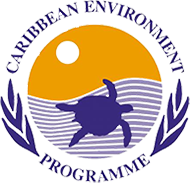It has been almost 40 years since governments in the Wider Caribbean adopted the Convention for the Protection and Development of the Marine Environment of the Wider Caribbean (Cartagena Convention), and more than 20 years since the adoption of its Protocol Concerning Pollution from Land-Based Sources and Activities (LBS). While progress has been made in the prevention and control of pollution from wastewater and agricultural runoff, these issues remain a challenge in the region and one solution is to strengthen the incorporation of Integrated Water Resource Management into the Convention.
Why Integrated Water Resource Management (IWRM)?
IWRM is a process that helps to balance competing water demands from across society and the economy, without compromising the sustainability of vital ecosystems. This is achieved through coordinated policy and regulatory frameworks, management arrangements and financing. In other words, IWRM helps to improve the way we use and manage water which is urgently needed to sustain development (UNEP, 2021).
IWRM and the Cartagena Convention
Under the Cartagena Convention, water-related issues are addressed through the LBS Protocol, focusing on water pollution from point and non-point sources. LBS Annexes I-IV establish a pollution control programme based on effluent and emission source controls, and specific obligations to regulate domestic wastewater and agricultural non-point sources of pollution. The 2021-2030 Regional Strategy of the Caribbean Environment Programme is the guiding framework for the Cartagena Convention and, by extension, the adoption of IWRM in the region. The Secretariat’s Regional Nutrient Pollution Reduction Strategy and Action Plan also provides an opportunity to further integrate actions under one common regional goal and under the proposed conceptual framework.
Conceptual framework
Through funding from GEF CReW+, a conceptual framework was developed to promote better incorporation of integrated water resource management into the Cartagena Convention. The main purpose of the framework is to identity those strategic approaches or issues that offer the potential to create synergies for the protection of the marine environment and trigger integrated processes for joint investments and governance. This will inform more programmatic and less project-focused approaches in the Wider Caribbean, including through the work of the Cartagena Convention Secretariat.
Figure 1 below shows the full picture for the integration of the global agenda into local water and land management processes. At the regional level, the Cartagena Convention would play a lead role for the establishment of a management cycle in which the global agenda feeds into local projects to meet global commitments, through a regional institutional structure.

IWRM implementation in the Wider Caribbean has been proposed under different approaches such as source-to-sea, ridge-to-reef, integrated watershed management, white water to blue water, etc. The main driver of these approaches has been several Global Environment Facility-funded projects, such as CReW+.
Disaster Risk Management (DRM) and Integrated Coastal Zone Management must join with IWRM to guide the integration of water and marine-focused programmes. These 3 processes coincide at the coastal ecosystems, that is, estuaries and deltas. Coastal ecosystems would facilitate the adoption of common goals for the 3 main management processes under shared principles, while upstream, IWRM would cover the hydrological river basin (including groundwater). DRM would be the link between water and land management, fully integrated at the river basin scale down to the coastal zone.
Benefits of the conceptual framework

The outline of this conceptual framework was developed for the Cartagena Convention Secretariat by Mr. Jorge Barrios, through a consultancy financed by the GEF CReW+ project. The complete document can be viewed online: http://gefcrew.org/carrcu/19IGM/LBSCOP5/Info-Docs/WG.41INF.24-Rev1-en.pdf






